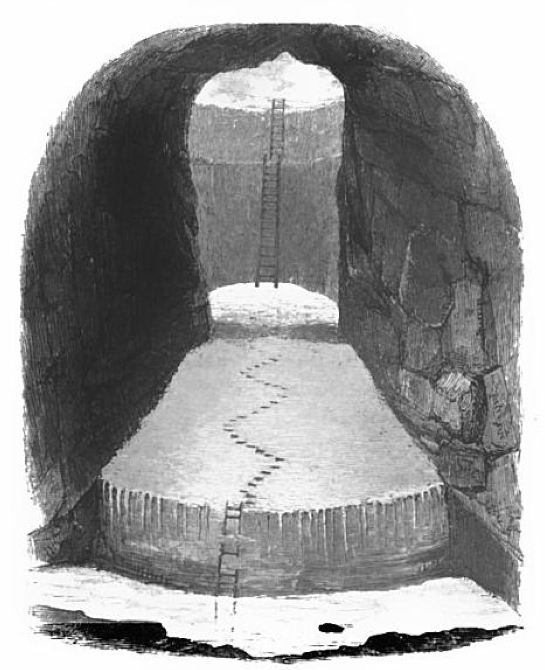A spacecraft on Asian Dramas Archivesthe moon is lying on its side. It snapped a leg while landing. And now it's lost power.
But before the freezing, two-week lunar night swept over Intuitive Machines' Odysseus moon lander, the robotic craft beamed back one final transmission from space. It shows the cratered grey surface spreading to the lunar horizon. And if you look closely, near top-left you can spot a crescent of shadowed Earth in the distance.
"Before its power was depleted, Odysseus completed a fitting farewell transmission," Houston-based Intuitive Machines posted on X, formerly Twitter, on Feb. 29.
"Received today, this image from February 22nd showcases the crescent Earth in the backdrop, a subtle reminder of humanity’s presence in the universe," the company, which became the first to land a commercial mission on the moon, added. "Goodnight, Odie. We hope to hear from you again."
This Tweet is currently unavailable. It might be loading or has been removed.
Indeed, Odysseus may awake from its slumber in mid-March when solar rays hit the lander's solar panels. Japan's space agency, JAXA, has a lander (SLIM, which landed upside-down in January) that recently awoke from a similar lunar night. But plummeting temperatures, dropping to some minus 250 degrees Fahrenheit, can damage essential components.
While Odysseus' landing wasn't perfect, NASA, which provided $118 million for the mission, hailed the challenging Feb. 22 touchdown as a success. Even in a compromised state, the lander beamed back scientific data from all of NASA's equipment, which included research into space weather and interactions between the spacecraft's plume and the moon's chalky surface.
"We hope to hear from you again."
The mission is part of the space agency's Commercial Lunar Payload Services (CLPS) program, which picks companies to deliver NASA missions to the moon. This frees the agency, already burdened with an ambitious timeline to return astronauts to the moon under the Artemis program, from having to completely plan and fund missions leading up to human landings. Such a crewed mission won't happen before 2026.
 The completed Intuitive Machines lander before launching to the moon. Credit: Intuitive Machines
The completed Intuitive Machines lander before launching to the moon. Credit: Intuitive Machines "This landing marked the United States’ first lunar landing since Apollo 17, as well as the first landing as part of our Commercial Lunar Payload Services initiative, which aims to expand the lunar economy to support future crewed Artemis missions," NASA said in a statement.
Odysseus landed near the lunar south pole, a coveted region for future exploration, and potentially moon bases. The south pole's permanently-shadowed craters are believed to preserve bounties of water ice, an invaluable resource for extended lunar missions — and for journeys to worlds beyond.
(Editor: {typename type="name"/})
 Simone de Beauvoir Would Have Been 106 Today by Dan Piepenbring
Simone de Beauvoir Would Have Been 106 Today by Dan Piepenbring
 Start 2014 with a Dual Subscription to McSweeney’s and The Paris Review
Start 2014 with a Dual Subscription to McSweeney’s and The Paris Review
 Updike on Free Parking by Sadie Stein
Updike on Free Parking by Sadie Stein
 Stablecoin bill advances in U.S. Senate as Trump critics call to end his crypto dealings
Stablecoin bill advances in U.S. Senate as Trump critics call to end his crypto dealings
Study trains Port Jackson sharks to respond to jazz music
 Turns out you can train a shark to like jazz.Researchers at Australia's Macquarie University have sh
...[Details]
Turns out you can train a shark to like jazz.Researchers at Australia's Macquarie University have sh
...[Details]
Listen to Garrison Keillor, Iris Murdoch, and William Styron! by Sadie Stein
 Listen to Garrison Keillor, Iris Murdoch, and William Styron!By Sadie SteinDecember 10, 2013Bulletin
...[Details]
Listen to Garrison Keillor, Iris Murdoch, and William Styron!By Sadie SteinDecember 10, 2013Bulletin
...[Details]
Ice—It’s More Than Just Frozen Water! by Dan Piepenbring
 Ice—It’s More Than Just Frozen Water!By Dan PiepenbringJanuary 8, 2014LookLower Glacière of the Pré
...[Details]
Ice—It’s More Than Just Frozen Water!By Dan PiepenbringJanuary 8, 2014LookLower Glacière of the Pré
...[Details]
Martin Amis Owes Everything to His “Wicked Stepmother,” and Other News by Dan Piepenbring
 Martin Amis Owes Everything to His “Wicked Stepmother,” and Other NewsBy Dan PiepenbringJanuary 6, 2
...[Details]
Martin Amis Owes Everything to His “Wicked Stepmother,” and Other NewsBy Dan PiepenbringJanuary 6, 2
...[Details]
NYT Connections Sports Edition hints and answers for May 19: Tips to solve Connections #238
 Connections: Sports Editionis a new version of the popular New York Times word game that seeks to te
...[Details]
Connections: Sports Editionis a new version of the popular New York Times word game that seeks to te
...[Details]
Swamp Thing by Dan Piepenbring
 Swamp ThingBy Dan PiepenbringJanuary 7, 2014On MusicCover of Bobby Charles’s 1972 album Bobby
...[Details]
Swamp ThingBy Dan PiepenbringJanuary 7, 2014On MusicCover of Bobby Charles’s 1972 album Bobby
...[Details]
Controversy at the Hagia Sophia
 Divine WisdomBy Kaya GencJanuary 8, 2014Arts & CulturePhoto: Schezar, via FlickrOn May 28, 1453,
...[Details]
Divine WisdomBy Kaya GencJanuary 8, 2014Arts & CulturePhoto: Schezar, via FlickrOn May 28, 1453,
...[Details]
The Best Christmas Card Ever by Sadie Stein
 The Best Christmas Card EverBy Sadie SteinDecember 25, 2013Arts & Culture, Our Daily Corresponde
...[Details]
The Best Christmas Card EverBy Sadie SteinDecember 25, 2013Arts & Culture, Our Daily Corresponde
...[Details]
Best Samsung Frame deal: Free Music Frame with Frame Pro art TV purchase
 $399.99 VALUE:As of April 23, buying any of the three sizes of the 2025 Samsung Frame Pro unlocks a
...[Details]
$399.99 VALUE:As of April 23, buying any of the three sizes of the 2025 Samsung Frame Pro unlocks a
...[Details]
Our New Year’s Resolution: Spend More Time with the Kids by Dan Piepenbring
 Our New Year’s Resolution: Spend More Time with the KidsBy Dan PiepenbringJanuary 6, 2014BulletinAs
...[Details]
Our New Year’s Resolution: Spend More Time with the KidsBy Dan PiepenbringJanuary 6, 2014BulletinAs
...[Details]
接受PR>=1、BR>=1,流量相当,内容相关类链接。